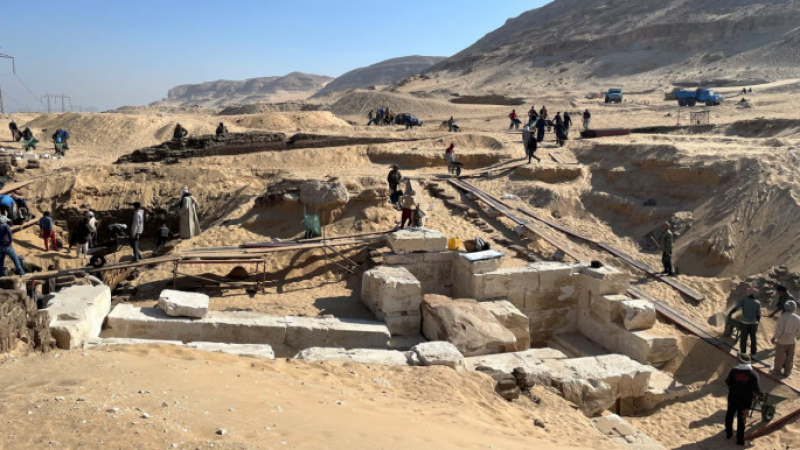- Stock market: DSE fails to sustain early gains, CSE extends rally |
- Illegal arms, disinformation pose major challenges to BD polls: Officials |
- BNP senses ‘dangerous conspiracy’ against democratic transition |
- CEC Vows Credible Election to End Stigma |
- High-level meeting reviews country’s economic progress |
Egypt Opens Valley of the Kings’ Massive Tomb to Visitors

Egypt Opens Valley of the Kings’ Massive Tomb to Visitors
The tomb of Pharaoh Amenhotep III, one of the largest in Egypt’s famed Valley of the Kings, was officially opened to the public on Saturday following years of careful restoration.
Egypt’s Tourism and Antiquities Minister, Sherif Fathy, unveiled the refurbished tomb, which dates back more than 3,000 years, to a group of reporters. Originally documented in 1799 during Napoleon’s brief campaign in Egypt, the tomb has endured centuries of excavation, looting, and natural deterioration. Its restoration was supported by the Japanese government and UNESCO.
Carved into the hillside on the west bank of the Nile, opposite Luxor, the tomb features wall paintings described by Japan’s UNESCO mission as “among the most exquisite surviving in the royal tombs of the Eighteenth Dynasty.” Decades of damage had left the structure at risk of collapse before restoration efforts.
Amenhotep III ascended the throne as a teenager and ruled Egypt for roughly four decades, overseeing a period of prosperity, stability, and remarkable artistic achievement. He died in 1349 BC at the age of 50 and was interred in the Theban Necropolis, where kings, queens, priests, and royal scribes were buried between the 16th and 11th centuries BC.
French and British excavations in 1799 and 1915 removed many tomb treasures, which now reside in institutions such as the Louvre Museum in Paris, the Metropolitan Museum in New York, and Highclere Castle in the UK. His mummy and sarcophagus are preserved at Cairo’s National Museum of Egyptian Civilisations, while colossal statues of Amenhotep III alongside his wife are displayed at the Egyptian Museum in Tahrir and the Grand Egyptian Museum.
Nearby, the massive mortuary temple of Kom al-Hetan has suffered extensive damage from annual Nile flooding. However, the Colossi of Memnon, two giant granite statues of the pharaoh, still stand sentinel, welcoming visitors to the ancient valley.
With the tomb now open, visitors can witness firsthand the grandeur of one of ancient Egypt’s most powerful pharaohs and the artistry that flourished during his reign.

